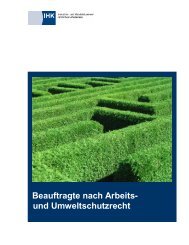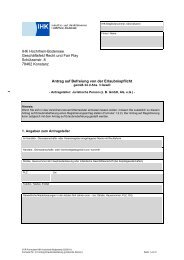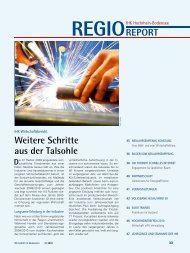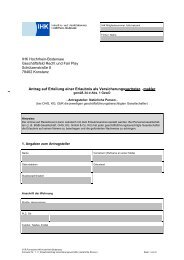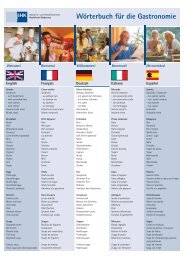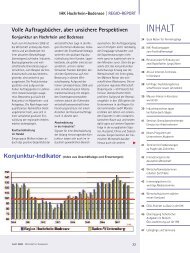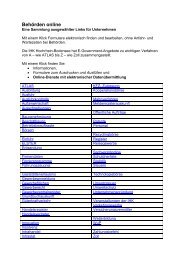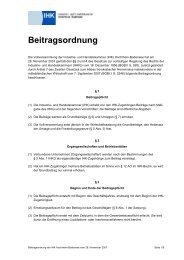REACH_One EINECs One SIEF_Final_clean
REACH_One EINECs One SIEF_Final_clean
REACH_One EINECs One SIEF_Final_clean
Create successful ePaper yourself
Turn your PDF publications into a flip-book with our unique Google optimized e-Paper software.
substances under <strong>REACH</strong>. In case of phase-in substances, the aim of this guidance is also to<br />
describe the process of the formation of <strong>SIEF</strong>s and ensuing data sharing in more detail.<br />
In the similar vein as the Guidance on substance identification, the Guidance on data sharing<br />
confirms that:<br />
“The substance identity often corresponds to an existing EINECS or CAS entry or similar<br />
identification code but there are also cases where one EINECS entry covers several substances or<br />
where several EINECS entries correspond to one substance.” (section 3.9, p. 25).<br />
In the context of pre-registration, the guidance states:<br />
“However, the submission of the identifiers does not include information on the actual<br />
composition of the substance. In some cases this could lead to the fact that, although several<br />
Potential Registrants have pre-registered the same identifiers (e.g. the same EINECS number),<br />
this does not mean that they will be registering the "same" substance (because the EINECS entry<br />
describes several substances).<br />
Mono-constituent substances and UVCB substances can be registered using the EINECS number<br />
as the proper identifier. In cases of errors in the EINECS entries, sufficient information to proper<br />
identify the substance can be given at pre-registration. In some cases the EINECS entries of<br />
UVCB substances are defined very broadly. Also in these cases it is recommended to provide<br />
additional information (e.g. IUBMB number for enzymes) to improve the process steps following<br />
pre-registration (i.e. <strong>SIEF</strong> formation and Joint submission).”(section 3.9, p. 26).<br />
The precondition of forming a <strong>SIEF</strong> is a discussion on the sameness of the substance among<br />
manufacturers and importers. Once agreement on the sameness of the substance has been<br />
found, <strong>SIEF</strong>s will be formed.<br />
“The assessment of the exact nature of an EINECS entry and the different substances it may<br />
cover can only be carried out by the manufacturers or importers who should be aware of the<br />
composition of the substance. It is, therefore, up to them to take the responsibility of defining<br />
precisely the substance for which a <strong>SIEF</strong> will be formed.<br />
In order to reach an agreement on the sameness of a substance, Pre-Registrants must enter into<br />
pre-<strong>SIEF</strong> discussions. As a consequence of this, a <strong>SIEF</strong> is formed when the Potential Registrants<br />
of a substance in the pre-registration list, actually agree that they effectively manufacture, intend<br />
to manufacture or import a substance that is sufficiently similar to allow a valid joint submission<br />
of data.” (section 4.5, p. 34)<br />
For substances with a well-defined composition the guidance confirms the line in the<br />
Guidance on substance identification that different impurities do not necessarily lead to<br />
different substances (even if the classification and labelling and thus the toxicological and<br />
eco-toxicological profile is different) but that at the same time there may also be cases where<br />
such substances should be considered to be different:<br />
“For substances with a well-defined composition (i.e. mono-constituent and multiconstituents<br />
substances) the sameness of the naming is in principle sufficient to be able to<br />
share data even though certain impurities might lead to a different classification/hazard<br />
profile.” (section 4.5.1, p. 35).<br />
For UVCB substances, the guidance confirms that, in most of the cases, the substances that<br />
have been pre-registered under the same entry in EINECS will be identified by potential<br />
registrants as the same substance and the joint submission of data for registration will follow.<br />
However, the guidance explains that, in certain cases, the exact nature of the substance<br />
14



